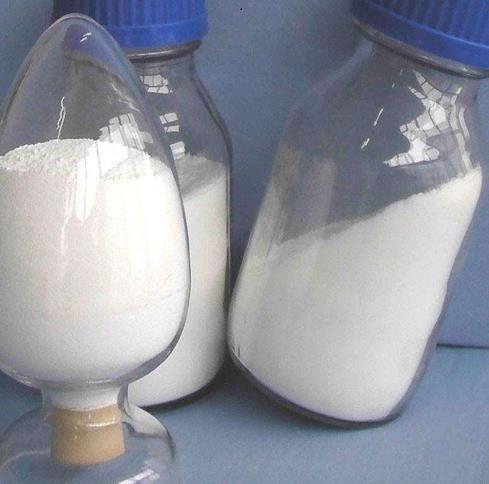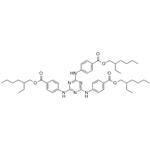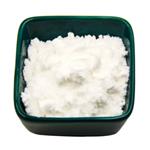Ethylhexyl Triazone: The Key to Advanced UV-B Protection in Modern Sunscreen Formulations
Introduction
Ethylhexyl Triazone is a chemical compound that has garnered significant attention within the chemical and cosmetic industries, particularly for its use in sun protection products. This compound, known for its high efficacy in absorbing UV-B radiation, plays a crucial role in the formulation of sunscreens and other personal care products designed to protect the skin from harmful ultraviolet (UV) rays. As the demand for effective sun protection continues to grow, understanding the properties, composition, applications, and storage requirements of Ethylhexyl Triazone is essential for professionals in the chemical field.

Figure 1 Characteristics of Ethylhexyl Triazone
Properties of Ethylhexyl Triazone
Ethylhexyl Triazone, with the chemical formula C48H66N6O6, is an organic compound that belongs to the class of triazine derivatives. It is characterized by its excellent UV-B absorption properties, with an absorption maximum (λmax) at approximately 314 nm. This makes it one of the most effective UV-B filters available in the market, providing broad-spectrum protection when combined with other UV filters.
The compound is a pale yellow to yellowish liquid or solid, depending on its specific formulation and temperature. Ethylhexyl Triazone is highly lipophilic, meaning it has a strong affinity for oils, which makes it an ideal ingredient for oil-based sunscreens and other cosmetic formulations. It is also highly photostable, meaning it does not degrade easily under exposure to sunlight, a crucial property for maintaining the effectiveness of sunscreens over time.
In terms of solubility, Ethylhexyl Triazone is soluble in organic solvents such as ethanol, isopropanol, and other cosmetic oils but is insoluble in water. This property necessitates its use in formulations where it can be adequately dissolved and evenly distributed, ensuring consistent UV protection across the applied area.
Composition and Key Ingredients
Ethylhexyl Triazone is synthesized through a multi-step chemical process that involves the reaction of triazine derivatives with ethylhexyl groups. The triazine ring, a heterocyclic compound with three nitrogen atoms, serves as the core structure, providing the UV-absorbing capabilities of the molecule. The addition of Ethylhexyl groups enhances the compound’s lipophilicity and compatibility with various cosmetic oils, making it an optimal choice for sunscreen formulations.
The key ingredients used in the synthesis of Ethylhexyl Triazone include:
1,3,5-Triazine Derivatives: These are the foundational blocks of the compound, providing the necessary structure for UV absorption.
Ethylhexyl Alcohol: This is reacted with the triazine derivatives to form the final product, imparting the desired lipophilic properties.
Catalysts and Solvents: Various catalysts and organic solvents are used during the synthesis to facilitate the reaction and purify the final product.
The purity and composition of Ethylhexyl Triazone are critical for its performance in end-use applications. Typically, the compound is used at concentrations ranging from 1% to 5% in sunscreen formulations, depending on the desired SPF level and the presence of other UV filters.
Applications of Ethylhexyl Triazone
Ethylhexyl Triazone is primarily used in the formulation of sunscreens and other personal care products that require UV-B protection. Its superior UV-B absorption capabilities, combined with its photostability, make it an ideal ingredient for high-SPF products. Some of the key applications include:
Sunscreens: Ethylhexyl Triazone is a critical ingredient in both broad-spectrum and UV-B-specific sunscreens. It is often used in conjunction with other UV filters, such as avobenzone and octocrylene, to provide comprehensive protection against both UV-A and UV-B rays.
Moisturizers with SPF: Many daily moisturizers include Ethylhexyl Triazone to offer sun protection without compromising the product’s moisturizing properties. Its compatibility with oils ensures that the moisturizer remains effective and comfortable on the skin.
Lip Balms: Lip balms with SPF protection often incorporate Ethylhexyl Triazone to protect the delicate skin of the lips from UV damage, ensuring hydration and protection in one product.
BB and CC Creams: These multifunctional cosmetic products, which offer skincare benefits along with coverage, frequently include Ethylhexyl Triazone to provide sun protection while maintaining a light, non-greasy texture.
Storage and Handling
Proper storage and handling of Ethylhexyl Triazone are essential to maintain its stability and effectiveness. The compound should be stored in a cool, dry place away from direct sunlight and moisture. Exposure to high temperatures or humidity can lead to the degradation of the compound, reducing its UV absorption capabilities and overall efficacy.
Ethylhexyl Triazone should be kept in tightly sealed containers, preferably in an inert atmosphere or under nitrogen to prevent oxidation. If the compound is in solid form, it should be protected from moisture to avoid clumping or other physical changes that could impact its solubility in formulations. In liquid form, it should be stored in containers made from materials compatible with organic solvents, such as glass or certain types of plastics.
Handling Ethylhexyl Triazone requires the use of standard safety precautions typical for chemical compounds. This includes wearing protective gloves, goggles, and clothing to prevent skin and eye contact. In case of accidental contact, affected areas should be rinsed immediately with plenty of water. As with all chemicals, it is important to consult the Material Safety Data Sheet (MSDS) for detailed information on handling, storage, and emergency measures.
Conclusion
Ethylhexyl Triazone is a highly effective UV-B filter that plays a vital role in modern sun protection formulations. Its excellent UV absorption properties, combined with its photostability and compatibility with other cosmetic ingredients, make it a preferred choice for high-SPF sunscreens and other protective skincare products. Understanding its properties, composition, applications, and storage requirements is essential for chemists and formulators working in the personal care industry. As the demand for effective sun protection continues to rise, Ethylhexyl Triazone will undoubtedly remain a key ingredient in the development of innovative sun care products.
![Article illustration]() Reference
Reference
[1] Scalia S, Battaglioli S, Bianchi A. In vivo human skin penetration of the UV filter ethylhexyl triazone: effect of lipid microparticle encapsulation[J]. Skin Pharmacology and Physiology, 2018, 32(1): 22-31.
[2] Sobanska A W, Pyzowski J. Quantification of sunscreen ethylhexyl triazone in topical skin‐care products by normal‐phase TLC/densitometry[J]. The Scientific World Journal, 2012, 2012(1): 807516.
);Lastest Price from Ethylhexyl Triazone manufacturers

US $0.00-0.00/kg2024-09-19
- CAS:
- 88122-99-0
- Min. Order:
- 0.10000000149011612kg
- Purity:
- ≥99%
- Supply Ability:
- 20tons

US $500.00-300.00/ton2024-09-19
- CAS:
- 88122-99-0
- Min. Order:
- 1ton
- Purity:
- 99%
- Supply Ability:
- 5000


